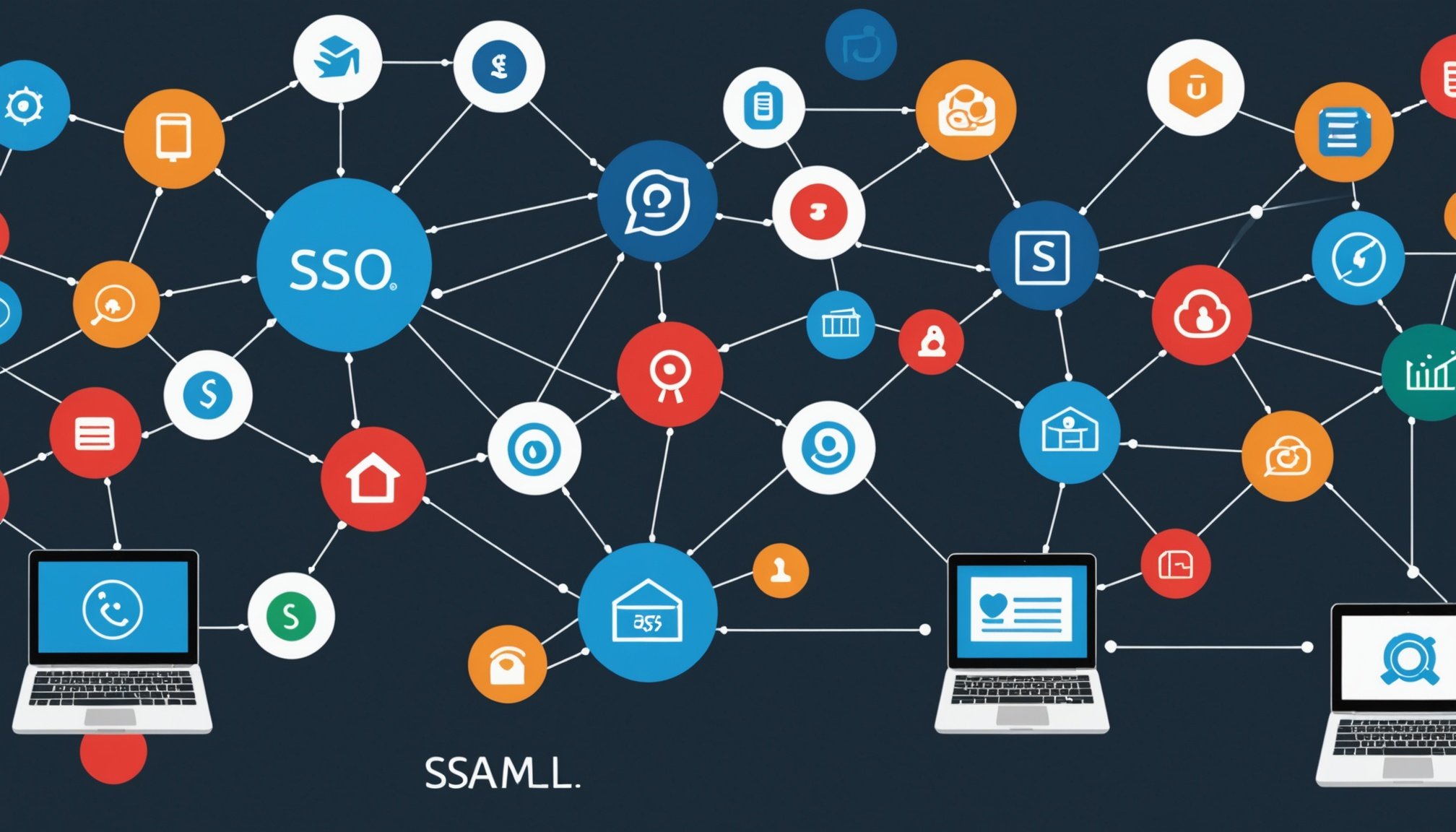Understanding SSO and SAML
Single Sign-On (SSO) enhances the user experience by allowing them to access multiple applications with one set of credentials. It simplifies access management and increases productivity by reducing password fatigue. Users only log in once, gaining seamless entry to all services linked under one authentication mechanism, which enhances security and simplifies user management.
Security Assertion Markup Language (SAML) is pivotal in facilitating SSO deployments. It acts as a framework for transmitting authentication data between parties, specifically between an identity provider and a service provider. SAML enables users to authenticate across different platforms securely.
Have you seen this : Essential Security Tactics to Protect Your Apache Kafka Cluster: Key Best Practices for Optimal Safeguarding
Key Components of a SAML Authentication Flow
- Identity Provider (IdP): Authenticates the user’s identity.
- Service Provider (SP): The application or service the user wants to access.
- Assertion: A package of information provided by the IdP that asserts the identity of the user.
In a typical SAML flow, a user accesses an SP, which requests authentication from an IdP. The IdP verifies the user’s credentials and returns a SAML assertion to the SP, granting access. This seamless exchange of authentication information exemplifies SAML’s role in establishing a robust SSO framework.
Essential Best Practices for SSO Deployment
To deploy Single Sign-On (SSO) effectively, embracing a structured approach is crucial. Adhering to best practices significantly enhances the long-term success of SSO deployment and integration processes.
Additional reading : Achieving Excellence in Robust Multi-Node Cassandra Clusters: The Definitive Step-by-Step Blueprint
Initial Planning and Assessment
Comprehensive planning is the bedrock of successful SSO deployment. Evaluate existing systems and identify gaps where integration can improve efficiency. Consider user habits and preferences to tailor the SSO solution, ensuring it aligns with organizational goals.
Choosing the Right Identity Provider
Selecting an appropriate identity provider is pivotal. Assess providers based on compatibility with current infrastructure, customer support, and security features. Verify that the provider supports seamless authentication across all platforms within the organization. Choosing wisely will impact the longevity and effectiveness of your deployment.
Defining User Access and Permissions
Define clear user roles and access levels before implementation. Create a detailed access management plan that restricts sensitive data to authorized personnel only. This minimizes security risks and ensures a streamlined user experience. Incorporating role-based access ensures that users have the exact permissions needed without unnecessary exposure to information.
By methodically planning and considering these essential best practices, organizations can achieve efficient and secure SSO deployment, enhancing both user experience and organizational security.
Step-by-Step Guide to Implementing SSO with SAML
Implementing SSO with SAML involves a detailed process ensuring seamless authentication. First, in the Configuring the Identity Provider stage, the identity provider (IdP) is configured to authenticate users’ credentials effectively. This setup also involves securing crucial credentials and defining authentication methods.
Setting Up Service Providers
After configuring the IdP comes the task of setting up service providers (SP). This involves registering the SP with the IdP and ensuring it can receive SAML assertions. Make sure to establish endpoints and map users to proper access rights. Ensure seamless communication between the IdP and SP is established, allowing users effortless access to needed services.
Establishing Trust Relationships
Central to successful SSO implementation is cultivating trust relationships between IdP and SPs. This can be achieved by sharing certificates and keys, establishing cryptographic elements that validate the authenticity of every transaction. Effective certificate management prevents man-in-the-middle attacks and ensures the integrity of data exchange, reinforcing overall trust in the authentication process.
Together, these phases represent a holistic approach to deploying and integrating SSO with SAML, presenting an organisation with enhanced capability to streamline access securely. By following these steps diligently, companies can facilitate a more efficient user experience, leading to elevated productivity and security.
Common Pitfalls in SSO Deployment
When deploying Single Sign-On (SSO), certain challenges frequently arise, potentially impacting the overall system performance. A common issue revolves around misconfigurations and errors. These might manifest in incorrect SAML setups or flawed integration processes between identity providers and service providers. Such missteps can derail user access and disrupt operations.
Another common pitfall is user experience issues. Inadequate interface design or lack of clarity in the SSO login process can lead to confusion and hinder seamless access. Users might encounter unexpected prompts, unclear navigation, or trouble in recognizing login states, reducing the system’s effectiveness.
Security vulnerabilities pose significant risks if not adequately addressed. Insufficient encryption or failure to manage certificates properly may lead to data breaches. Utilizing robust cryptographic techniques is essential to safeguarding user information during SSO transactions.
Organizations can mitigate these pitfalls by conducting rigorous tests and audits, ensuring security best practices are incorporated, and maintaining clear communication channels for users. By proactively addressing these areas, companies can enhance the reliability and success of their SSO deployments. This strategic approach fosters smoother integration and bolsters overall security.
Troubleshooting SSO Issues
Facing hurdles with Single Sign-On (SSO) is common. Identifying and resolving these issues promptly ensures efficient workflows.
Identifying Common Errors
Errors in SSO troubleshooting often manifest as login failures or unexpected access denial. First, examine error messages—specific error codes can pinpoint issues. For example, mismatches in SAML assertions or expired authentication tokens. By carefully reviewing these messages, you can quickly zero in on the root cause.
Tools for Troubleshooting SSO
Utilize effective tools to streamline error resolution. Platforms offering comprehensive logs can be invaluable. Tools like SAML-tracer and authentication loggers help track and analyse authentication flows, helping to detect misconfigurations in real-time. These, coupled with network analysis tools, provide a robust groundwork for troubleshooting.
Escalating Issues to Support
Sometimes, expert intervention is necessary. Best practices involve thoroughly documenting the issue: include error messages, user reports, and immediate resolution attempts. Escalate well-documented cases to support teams for faster resolutions. Enhanced cooperation and detailed documentation help support teams diagnose issues efficiently, reducing downtime. Prioritizing thorough documentation in escalations significantly enhances the support process, ensuring swift, effective assistance.
Security Considerations for SSO with SAML
Implementing strong security measures when using Single Sign-On (SSO) with Security Assertion Markup Language (SAML) is essential to safeguard user data.
Implementing Multi-Factor Authentication
Incorporating Multi-Factor Authentication (MFA) significantly increases SSO security. By requiring users to provide two or more verification factors, MFA thwarts unauthorized access and enhances identity protection. It’s a crucial layer of defense for any SSO system.
Regularly Auditing Access Logs
Regular audits of access logs are indispensable for monitoring SSO activity. By scrutinizing these logs, organizations can detect anomalies or suspicious behavior, permitting timely intervention. This practice not only strengthens data protection but also aids in fine-tuning access protocols to respond to emerging threats.
Staying Compliant with Security Standards
Maintaining compliance with established security standards, such as ISO or NIST, is critical in any SAML deployment. These standards provide guidelines for ensuring data integrity and securing personal information. Adhering to them helps an organization meet legal obligations, enhancing trust and safety in the SSO ecosystem.
Embedding these robust security considerations within your SSO framework helps protect sensitive information, ensuring a secure and reliable user access experience.
Real-World Examples of Successful SSO Integrations
Exploring successful Single Sign-On (SSO) integrations provides valuable insights into its impact on organizational efficiency across various industries. Notable instances demonstrate how SSO streamlines operations and minimizes delays.
One such success story is in the education sector, where universities have deployed SSO to manage student and faculty access efficiently. By employing Security Assertion Markup Language (SAML), they enabled students to access multiple educational platforms with a single login, reducing technical support calls and enhancing user satisfaction.
Similarly, healthcare organizations have adopted SSO to ensure seamless access to patient records and critical systems. By integrating SSO with existing health information systems, SAML has improved data security and compliance with law standards, streamlining care delivery without compromising safety.
E-commerce companies have also embraced SSO to optimize user experiences. By simplifying login processes and enhancing security with SAML, these businesses have bolstered customer retention rates and improved transaction security. Users enjoy reduced login friction, contributing to higher satisfaction and repeated business.
These real-world deployments underscore the transformative potential of SSO, offering lessons on overcoming SSO implementation challenges and reinforcing the link between successful SSO integration and increased operational effectiveness. Organizations looking to implement SSO can draw from these examples to harness its full benefits.











